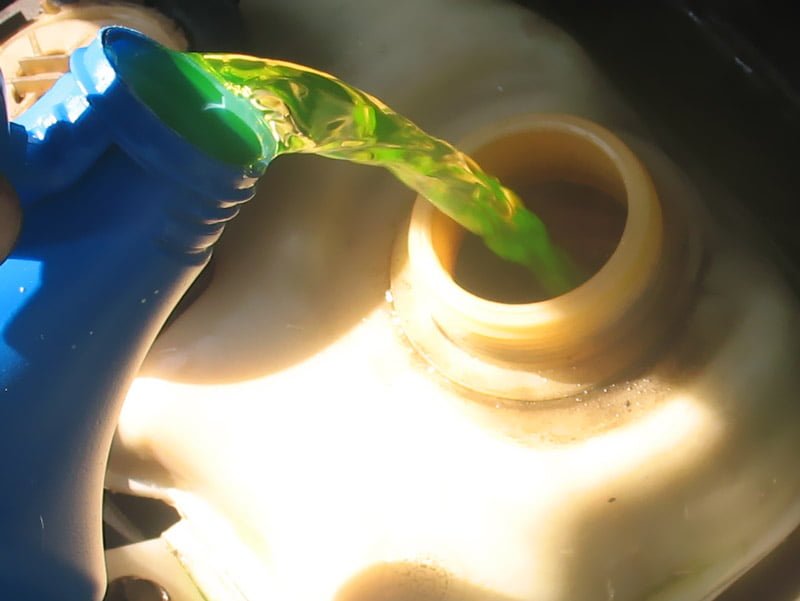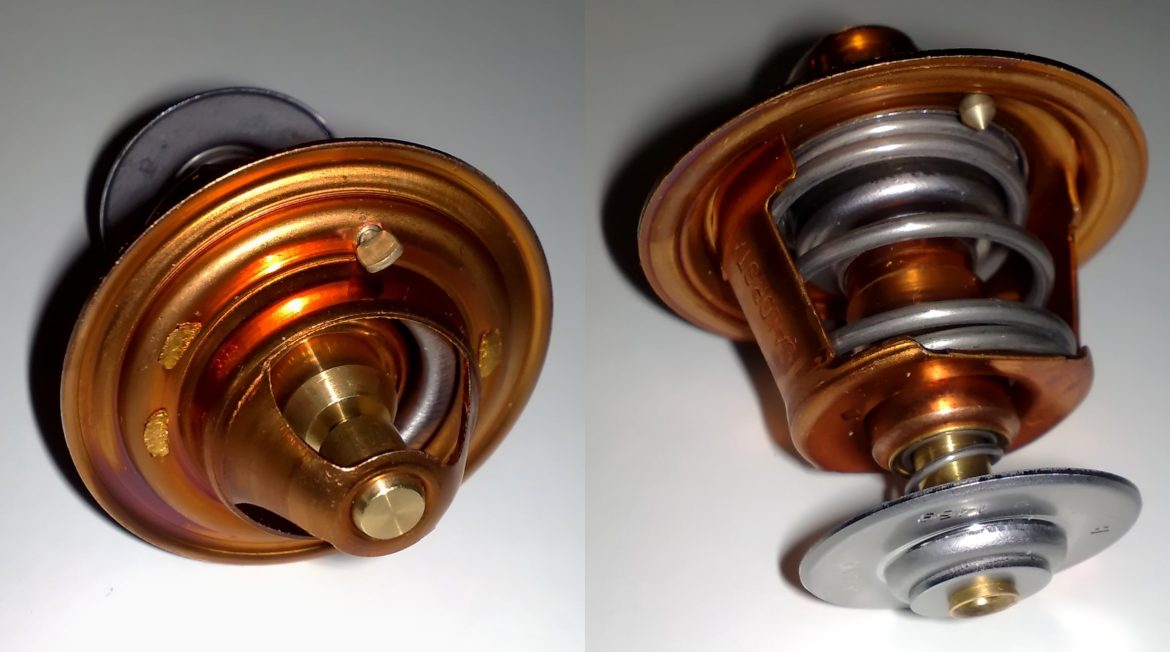Flushing the car radiator is like taking a bath or winterizing the lawn mower. It cleans out the impurities that can build up over time and clog or otherwise inhibit the radiator’s proper functioning. Radiators are the Rodney Dangerfields of car components, receiving little attention or appreciation for their vigilance in keeping the engine from freezing and overheating.
Many drivers take care to ensure their radiator is full of antifreeze, particularly during the winter. That is wise but it isn’t sufficient. Experts disagree on how often radiators should be flushed—some say every five years and some say every two years—to prevent gunk from building up and clogging the flow of coolant. Automobile manufacturers also vary in their recommendation, ranging anywhere from 30,000 miles to 150,000 miles. It is best to consult the vehicle’s manual for guidance.
How a radiator is flushed matters nearly as much as how often. Follow these simple steps on how to flush the radiator for optimal results.
Prepare for the Radiator Flush
Before flushing the radiator, some care must be taken to gather the required items and ensure safety.
- Park the vehicle on flat ground and give the engine time to cool down. If the vehicle has been in operation, it needs to be turned off for about 30 minutes before performing this function.
- In the meantime, make sure the four tools required for the job are ready: a rag or towel, a large funnel, a screwdriver or wrench, and a large drain pan to hold the flushed fluid. It is also wise to don safety goggles and gloves.
- Consult the vehicle’s manual to determine the amount of coolant required. Most V6 engines hold 5.5 quarts of engine coolant, but that number can range all the way up to 18 quarts, or 4.5 gallons.
- Pop the hood and inspect the condition of the radiator and the hoses attached to it. Make sure there are no leaks, cracks or serious wear, and that the hoses are fitted securely with hose clamps. If anything is out of order, it may be necessary to replace a hose after the coolant is drained.
Automotive stores sell inexpensive radiator flush kits along with antifreeze. They can be helpful in flushing the cooling system but are not necessary. You may need to jack up the car’s front end to facilitate access to the drain plug. If it can be easily accessed by shimmying under the car, skip the jack.
Drain the Coolant
Before the new engine coolant can be added, the old coolant must be drained from the vehicle.
- Locate the drain plug at the bottom of the radiator. It may be accessible from a standing position, but will most likely require getting under the vehicle to reach it. Once the plug is located, come back to the hood and remove the radiator cap with the rag in hand to prevent any steam or hot liquid that might escape from burning your hand.
- Get back beneath the vehicle and loosen the drain plug using a socket wrench or screwdriver, whichever is appropriate. Place the funnel and drain pan under the plug to catch the coolant as it pours out. Give it time to completely drain so all the old coolant is replaced.
- Once the liquid has completely drained, screw on the drain plug tightly. You don’t want coolant leaking out of the bottom of the vehicle during the flushing process or after you refill the system.
Flush the Radiator
Now the cooling system is ready to be flushed.
- Using the funnel and with the engine still turned off, pour radiator flush solution, like BlueDevil Radiator Flush, into the radiator. Then fill the radiator with distilled water until it is full. This will be evident by looking into the radiator spout and watching the water level rise. Replace the radiator cap and make sure it is secure before starting the engine.
- Let the car run for 10 minutes to allow the water and flushing solution to circulate and clean the system of any residue that might be present. Turn on the heater and run it at full blast.
- Turn off the car and heater and let the engine to cool for 30 minutes so that it is safe to touch without getting burned. Using the rag, remove the radiator cap and the drain plug again, allowing the flushing liquid to drain into the drain pan. The color of the water will reveal how much gunk was in the system and whether more flushing is required.
- Next, repeat the flushing process just with distilled water until the fluid that drains out is clear. This can easily take two or more water flushes.
Note: When flushing a radiator, store all the liquids removed from the vehicle in a container and dispose of it responsibly at a hazardous waste facility, service station or auto parts store. Pouring coolant or flushing solution onto the ground or into storm drains exposes the local water system to harmful chemicals. Also, keep the antifreeze away from children and pets. Antifreeze tastes sweet but is highly toxic to humans and animals.
Add the Antifreeze
At this point the vehicle is ready for some fresh coolant. Check your owner’s manual to determine the amount it needs. Most engine coolant comes ready-to-use, which means it is already mixed with water, but it is possible to purchase concentrated coolant, which must be mixed 50/50 with distilled water. After filling the cooling system, start the vehicle with the heater on high again and let it run for 10 minutes to circulate the fresh coolant. Turn it off and allow it to cool before checking the coolant level. If it is too low, add more antifreeze.
The Cost of a Radiator Flush
The great news about a radiator flush is that it takes more time than money to complete. A gallon of antifreeze costs under $10, a bottle of BlueDevil Radiator Flush is another $10 and a flush kit is under $5. Distilled water costs even less, bringing the total bill to under $30. Because each flushing circuit takes about three-quarters of an hour, including the time required to allow the car to cool, the entire radiator flush could take several hours.
Performing a radiator flush extends the life of the vehicle and can prevent the engine from overheating. Well-engineered radiator flush solution restores efficiency to vehicles by removing grease, grime, rust and other radiator buildup that results from normal vehicle use. BlueDevil Radiator Flush is formulated to work well in all cars and trucks, even those with hundreds of thousands of miles on them. Knowing how to flush the radiator and doing so when needed helps ensure your vehicle won’t overheat in the dead of summer—even if you do.
BlueDevil Products can be found at AutoZone, Advance Auto Parts, O’Reilly Auto Parts, NAPA, Parts Authority , and other major auto parts retailers.
BlueDevil Products can be found on Amazon.com or at AutoZone, Advance Auto Parts, O’Reilly Auto Parts, NAPA, and other major auto parts retailers.
6 responses to "How to Flush the Radiator in Your Car or Truck"
6 Comments
Leave a Reply
Related Articles
Search Blog
Subscribe
Blog Categories




After the last time flushing the radiator with only water, if you add 50/50 mix to the system, the fluid in the system will not be 50/50 due to the water that remained in the engine and did not drain out 100%. Is this a problem?
Buck-
Trace amounts of water that remained in the engine would not be a problem when adding your 50/50 mix.
Thank you!
-BDP
My radiator is leaking but appears to be full of antifreeze does it need to be flushed
Amy-
How quickly are you losing antifreeze? Is the vehicle overheating at all? Are you asking if it needs to be flushed in terms of using a BlueDevil product or do you feel there is some type of restriction/clog in the radiator that is causing it to leak? Please contact our technical support line at 888-863-0426 so that we can get a little better understanding of the vehicle’s condition and be able to make any appropriate recommendations.
Thank you!
-BDP
If I have previously added Green coolant slash antifreeze to the radiator and water which is not the recommended type for a Chrysler Sebring of 2009. Can I flush it But still Amounts. It’s a little small amounts of green coolant which the new is supposed to be orange. Will that be a problem?
Chris-
Yes, you would be able to flush the cooling system to remove the trace amounts of green antifreeze. Feel free to contact our technical support line at 888-863-0426 with any other questions.
Thank you!
-BDP